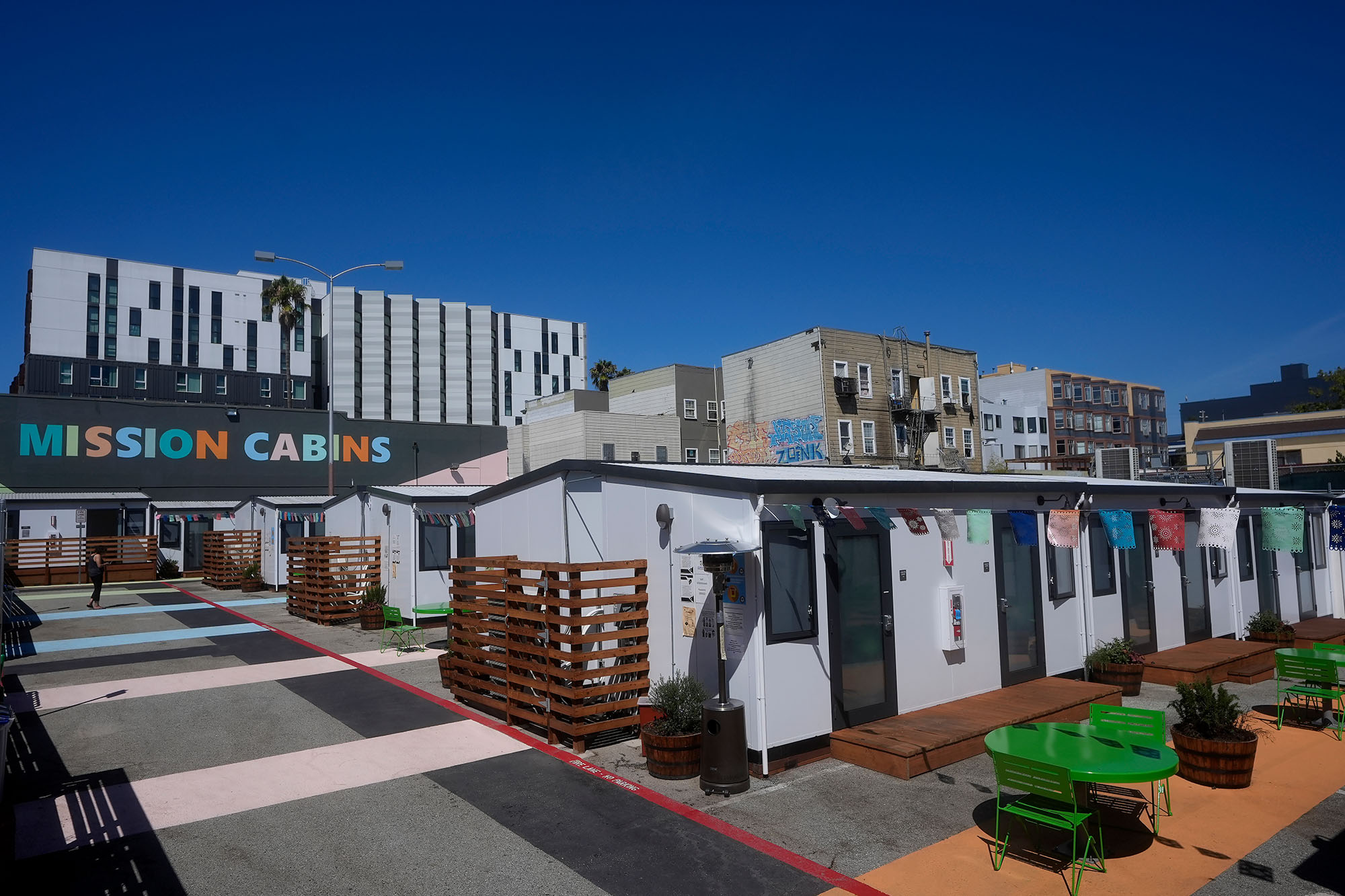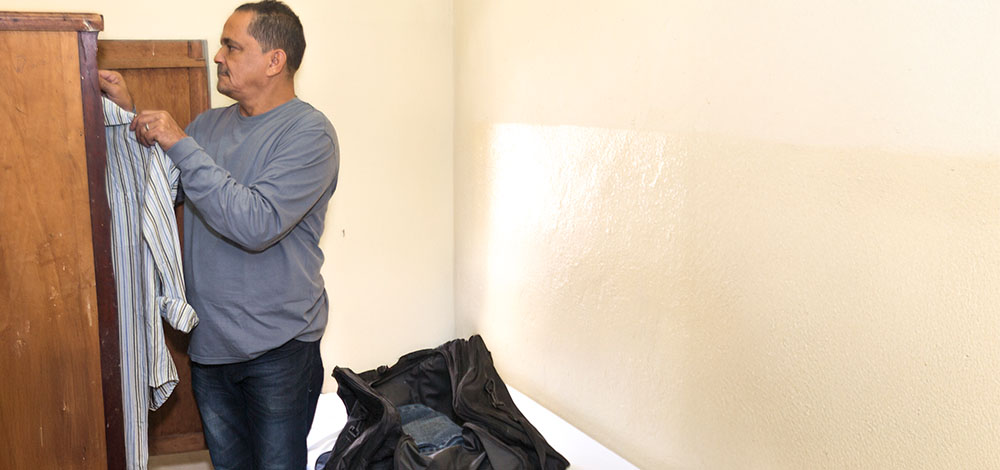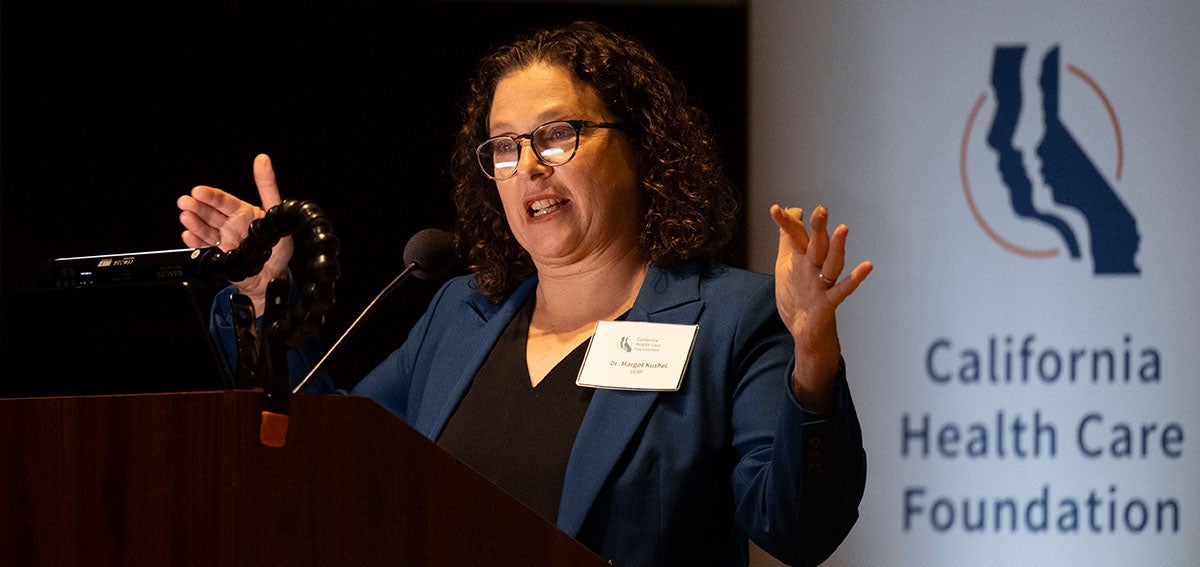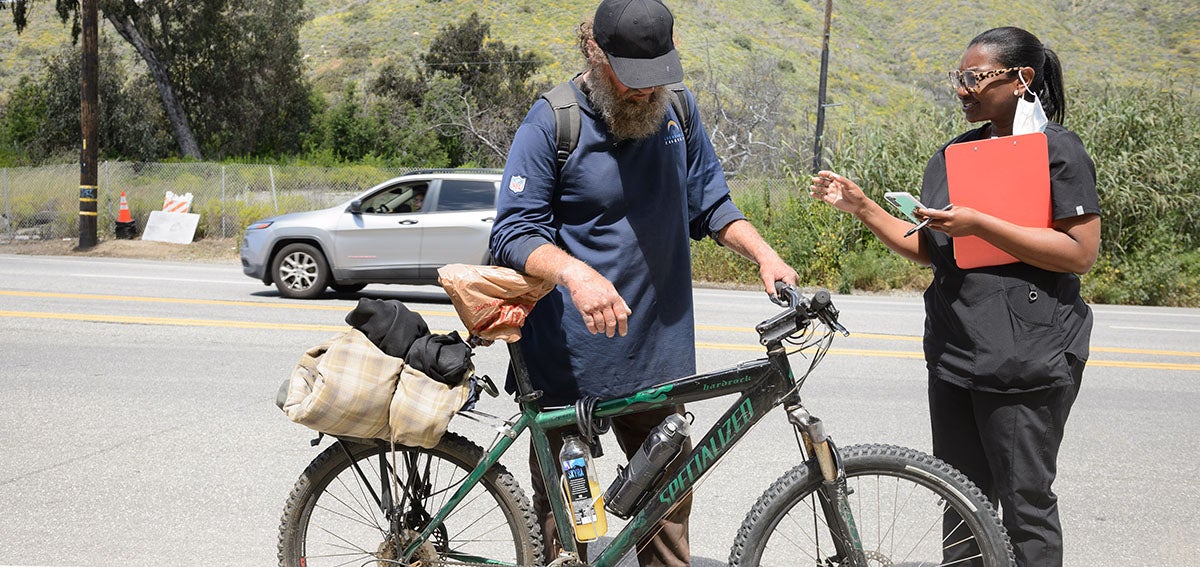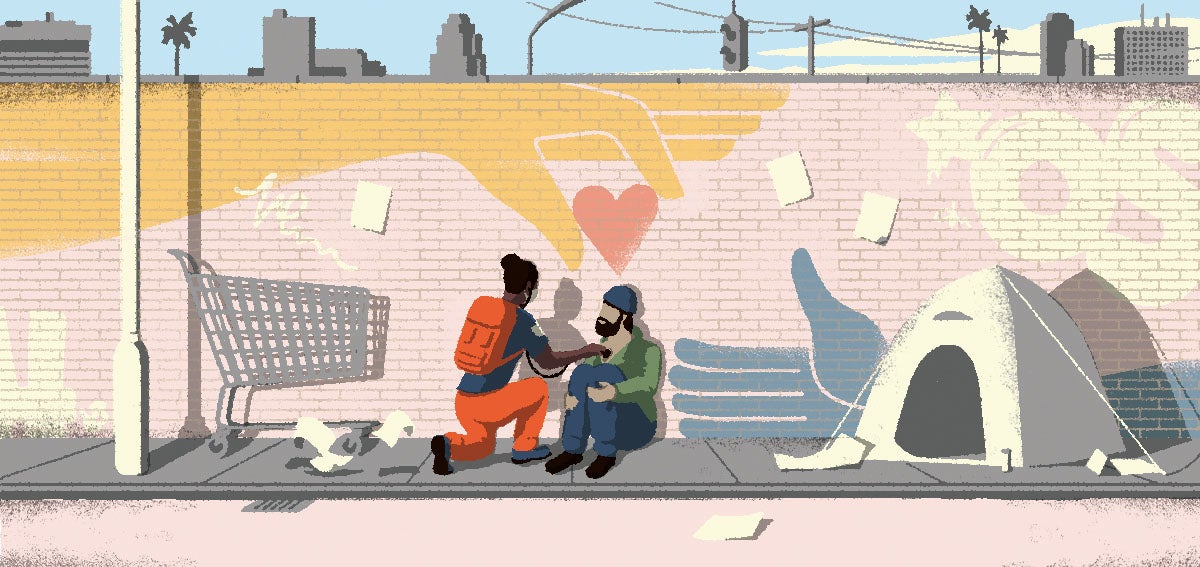
Seven years ago, I lived on the streets of West Oakland, California — one of the legions of human beings whose trauma had hurled them into the position of having no place to be somebody. In my unhoused community, we huddled in our tarp-covered shanties — cobbled together out of discarded items under a cathedral of overpasses and elevated Bay Area Rapid Transit (BART) tracks by the truck stop off Interstate 80 on 6th Street. Like the other 80 or so displaced people I lived with, my struggle with mental health, substance use, and poverty had me falling off the edge of the world.
While people with someplace to go — someplace to be — flew by on the tracks and freeways above us, we inhabited lives of slow and quiet desperation. Our existence was focused on self-medicating, scrounging for scrap metal to pay for drugs, building shelters out of trash, putting out fires, cleaning and moving our camp, and hiding from the violence that attends poverty. We spent our days trying to survive, looking after the members of our street community who were hurting, and making many trips — so many trips — to the emergency department (ED), where we were often treated badly and denied critical services simply because we lacked a place to live. It was the only place we knew to seek health care, but we were often turned away.
Our few contacts with the world we had fallen from occurred when the California Department of Transportation (known as Caltrans) would come to move our camp, or when the police would show up, at random, to take one of us to the highway patrol station when they were training new recruits to recognize what it looked like when people were on drugs. Because I was the oldest person in the camp, had no criminal record, and felt comfortable communicating with law enforcement — and because I was White — I was often the person chosen to deal with the cops. On more than one occasion I found myself at the station, standing before the stare of a California Highway Patrol officer-in-training so that they could learn what the eyes of someone on drugs looked like.
Once, a young officer, under the watchful gaze of her training sergeant, was shining a flashlight in my face and looking deep into my eyes. “Don’t stare too long, you might fall in love,” I said, smiling through missing teeth and batting my eyelashes. It made the officer and the sergeant laugh and emboldened me to engage them in conversation. I asked the sergeant if the new recruits were being trained in helping people experiencing a mental health crisis. He thought that was funny, too, but I was serious. I wondered whether he knew what a mental health crisis would look like, even if it were staring him right in the face.
Building Trust (and Getting Glasses)
For years we lived like this, on the fringe — the trauma that brought us there compounded by how ostracized from the society of housed people our lives had become. For years our community under the overpass had no meaningful connection with the world on the other side of the freeway. Then, one day, Wilma Lozada, a social worker from the Alameda County Health Care for the Homeless (ACHCH) Street Health team, showed up at my tattered, igloo-shaped hovel. Wilma introduced herself and told me what ACHCH was all about. She and Aislinn Bird, a psychiatrist, and Jared Bunde, a registered nurse, were a Street Health team that would visit our camp weekly, she explained.
The Street Health team worked with the Trust Health Center (also known as the Trust Clinic), a community clinic located only eight blocks away from our camp. Wilma told me that I could go there, take a shower, and receive medical attention if I needed it. Most important, she talked to me like a person and asked me whether there was anything I needed. Pushing up the two pairs of dollar-store reading glasses that hung heavy on my nose, strapped together to double the magnification so that I could see, I said, “A new pair of glasses would make a huge difference.” She promised me that we would work together to make that happen.
Every Wednesday after that, the ACHCH Street Health team came to our camp. I got to know Wilma, Dr. Bird, and Jared, and they got to know me and the people in my community. I became a patient at the Trust Clinic, where I was able to start therapy and learn about self-care and harm reduction. I started working with my social worker, Andrea Zeppa, who helped me get an ID; file for Supplemental Nutrition Assistance Program benefits; and start the long, arduous healing journey of stabilizing my life, recovering from my trauma and addiction, addressing my physical and mental health issues, and navigating my way out of abject poverty toward a sustainable, housed life in the society I had become so alienated from. Wilma helped me learn to trust people. And yes, she helped me get new glasses.
Emerging from the Fire
Although forging this partnership with ACHCH was an initial step, and dramatically improved access to services for myself and my unhoused community, we were still on the streets, still contending with being outcasts, still subject to the violence of poverty, and still pilloried by the bigoted attitudes of much of the citizenry, who stigmatized us for being unhoused. We still struggled, but now we had allies we could trust, and some glimmer of hope that if we worked hard and took responsibility for our own well-being, we may have a means of egress from our marginalized existence on the streets.
For me, the real turning point came on April 5, 2018. That night, a fire ravaged one of the broken-down pop-up tent trailers that littered our camp, trapping my friend Delilah, a 58-pound pit bull, inside. From across the yard, I heard a loud boom, followed by Delilah’s howling screams. I turned and saw a plume of smoke lifting glowing embers out the trailer windows. I ran to the doorway, which was rippling with flames, and kicked away some burning trash. Unable to see through the wall of flames and the smoke inside, I could hear Delilah, her confusion and fear piercing my ears with wailing yelps.
I dove headlong through the door, through the flames, into the dark swirling smoke inside, my arms flailing around trying to find Delilah. My pants caught fire around my calf, and I could smell polyester melting into my flesh. But I could not feel it, not yet. All I could feel was Delilah thrashing around, her paws clawing at me as I grabbed at her fur. When I had her cradled in my arms, I threw her, full force, out the window and heard her whimpering as she ran away into the night. I was trying to climb out after her when the tent flaps around the window burst into flames. In that moment, surrounded by live fire, my mind went still, collapsing into the realization that I would die in that tiny nowhere of a broken-down trailer and that the fire would live. I crumbled into a ball and rolled through the fire, onto the floor, and out the door. Hands came out of the darkness, patting down the flames that engulfed me, rolling me around in the dirt.
Delilah was unharmed, but I sustained major burns on my hands and legs that affected more than 20 percent of my body. Because of the severity of my injuries, I was rushed to the Saint Francis Memorial Hospital Burn Center. Had my burns been less extensive, I would have likely been treated at my local ED and soon released back onto the streets. Because I made it into the burn unit, I received the best treatment available and spent a month in intensive care.
I lay in that hospital bed with tubes coming out of me, sections of my skin grafted to the parts of me that were badly burned, wondering whether I would ever walk again. All the while, there were people in the ACHCH care community and my street community working hard to make sure that I was all right and that I had the care I needed and someone to talk to. As I lay there, it dawned on me: If so many people believed in me and were willing to work so hard on my behalf, it would be disrespectful for me to not work hard at my own well-being. From that day, when I was at my lowest point, broken and burned, I committed to my journey of self-care and have never self-medicated again. Since then, I have left prescribing what medications I take in the capable hands of Dr. Bird, whom I had come to trust, and who continues to help me stay sane and off drugs to this day. My recovery has been the result of a great deal of work on my part that I am not sure I could have done without the help of allies like Dr. Bird. The process of my trauma turning into transformative growth had begun.
Securing a Roof and Stability
When I was released from the hospital, I was still unhoused. I returned to navigating the confusing world of social services, searching for sustainable housing and stabilizing my mental and physical health. I had the Trust Clinic, which was my primary source of health care and my bedrock; the support of my unhoused community; and a partnership with my social worker, who helped me connect with other allies — like a lawyer at the Homeless Action Center, who helped me apply for Supplemental Security Income (SSI). I was also connected with Cronin House, a residential substance use disorder program where I stayed for two months and became grounded in my recovery before moving back to my camp community.
At that time, our 6th Street community worked together to keep our area clean and negotiate with the City of Oakland and Caltrans to get bathrooms and a dumpster for our trash and to move our camp from one side of the street to the other on a scheduled basis for street cleaning. Many of us partnered with Downtown Streets Team, a nonprofit that organizes displaced people to work in the community and pick up trash in exchange for gift cards, work training, and housing navigation.
It wouldn’t be until the COVID-19 lockdown in 2020, when many of us were afforded temporary housing in hotels, that I started living indoors. From there, through the local Shelter Plus Care program, I was placed in a single-occupancy residence hall — a 9-by-7-foot room in a building of eighty occupants, where I shared a bathroom with two other men and paid 30 percent of my SSI allotment per month as rent. I have managed to keep a roof over my head ever since.
Finding My Voice
Since moving off the street in 2020, I returned to school at San Francisco State University to pursue a degree in creative writing. I increased my work with ACHCH, speaking at conferences and symposiums, advocating for the efficacy of street medicine and patient-centered care. I realize now that my friends who are still living on the streets and other people who are unhoused need people like me — people who have walked in their shoes and faced the same impediments and challenges — to speak for them to strengthen the policies and programs that can help them move to recovery.
These days, I live a meaningful life focused on engaging in a public conversation on how we, as a collective care community of people formerly unhoused and those who care for them, can improve the outcomes of people experiencing the public health crisis of homelessness. I serve on the student council of the holistic health department at San Francisco State University, organizing conferences on reimagining health care, and I am an adviser for the Center for Health Care Strategies, a national nonprofit focused on improving outcomes for people enrolled in Medicaid. Partnering with the Center for Health Care Strategies, I have told my story of being homeless and my journey to becoming housed to inform health-related policies and programs for people who face obstacles to well-being, including poverty, mental health and substance use challenges, and systemic racism. I have shared my experiences with audiences in California and nationwide through webinars, classes, and conferences. At this time, I am an adviser for a Center for Health Care Strategies-led and California Health Care Foundation-funded project, the Partnerships for Action: California Health Care and Homelessness Learning Collaborative, which supports cross-sector partnerships between health care and homeless services organizations.
My tale shows that the trauma inherent in being homeless can be turned around, resulting in transformative growth and positive outcomes.
My story could well have been the dash between dates etched on a headstone, were it not for the policies that make street medicine, substance use disorder treatment, and the empowerment of people living through homelessness possible. My tale is one that celebrates the efficacy of providing accessible health care, harm reduction, trauma-informed life counseling, and navigation toward sustainable housing to the unhoused. It shows that the trauma inherent in being homeless can be turned around, resulting in transformative growth and positive outcomes.
I have rejoined the world that I was once so far apart from. Commuting to school, I ride the BART train on the elevated tracks over the site of the camp where I used to live, which is now vacant and fenced off, and past a site farther down the tracks that was once called “Pipe City,” where more than 200 impoverished people lived through the winter of 1932–33 during the Great Depression and is now occupied by a Motel 6. Because of the Works Progress Administration, a New Deal agency that employed millions of job seekers to carry out public works projects, the people who lived at Pipe City in the 1930s were able to find work and build meaningful lives. Of the eighty people who lived in my camp, twenty of us found permanent housing, ten of us became drug free, twenty of us passed away, and the rest moved to other camps.
Harnessing the Power of the Community
During the Great Depression, when a large percentage of the US population was impoverished and facing homelessness, President Franklin D. Roosevelt recognized that people who were poor and unhoused were not the problem but, rather, a resource whose collective energy could be harnessed and applied to fixing the problem. Back in the days of Pipe City, the Works Progress Administration solved the problem by putting people front and center. Today, more should be done to center the voices of people experiencing homelessness. I imagine a world where we can include people who are unhoused in creating solutions to issues such as poverty, homelessness, and substance use disorder to create better outcomes for more people. We have the services in place through street medicine and other coordinated health and social services to bridge the gap between service provider and client to create a cooperative care community where people on the streets are empowered to be part of the solution. Involving people who have experience being unhoused in identifying the challenges and what approaches work will inform more-effective programs and policies.
The mindset that sees homelessness as a problem and vilifies those who are unhoused as the cause of the problem fails to address the systemic conditions that are at the root of the public health crisis that is homelessness. This mindset is what impedes us from taking a whole-person, whole-community-based approach to addressing the needs of people who become unhoused.
Trust is the most important currency in helping people out of homelessness. My experience of being on the streets has taught me that if people in law enforcement and street management — those who most often deal with people living on the streets — take a trauma-informed approach to addressing the homeless population, they are better equipped to work with people who are unhoused, creating safer spaces and more positive outcomes. I have learned that the positive health care interventions that programs such as the ACHCH Street Health team provide, accessible substance use disorder rehabilitation programs such as the one provided by Cronin House, and work empowerment programs such as the Downtown Streets Team are highly effective interventions that engage those of us experiencing homelessness, resulting in more positive outcomes.
My journey to become housed taught me that there is a lot that needs to happen on the road toward achieving stability and permanent housing. Even though affordable housing is in such short supply, there is much that can be done to support people who are unhoused in the interim.
Closing encampments without providing transitional housing and supports is not the solution; people will just relocate to another spot. Even when there is no affordable housing readily available, unhoused people and service providers can work together as a care community to make living conditions on the street safer and can do a lot by way of harm reduction, resource sharing, drug deferment, and self-care to prepare unhoused people for eventually finding housing. It is important, too, to invest in safer infrastructure such as bathrooms and trash receptacles and to help people stabilize and get ready for when housing is available. Similarly, when someone on the streets has a health crisis requiring them to be hospitalized, that is a critical opportunity to intervene and help that person transition to a more stable living situation.
Having a place at the table where decisions are made that affect unhoused communities has shown me that including people like me — who know firsthand what it feels like to be unhoused — in the creation of policy that affects us not only helps us grow and recover but also helps develop a more effective, community-based, client-centered system of care.
Finally, policies that provide training and positions for people with lived experience of homelessness for roles such as peer counselors, housing navigators, and case workers show that there is a meaningful pathway to work off the street. People who know what it feels like to live on the street can relate to people who are unhoused, bridging critical connections to help people find stability in their lives. Ensuring longer-term career ladders for these people builds the knowledge base of service providers and benefits the system that is seeking to more effectively help people experiencing homelessness find solid footing.
Everyone deserves a new deal. The stories of people like me can inform policies to drive real change for the hundreds of thousands of people living on the streets who need a place to be somebody.
This article was first published in the February 2024 issue of Health Affairs.
Authors & Contributors
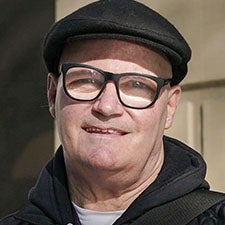
Lawrence Lincoln
Lawrence Lincoln is a formerly unhoused client of and collaborator with Alameda County Health Care for the Homeless. He serves as an adviser for the Center for Health Care Strategies’ Partnerships for Action: California Health Care and Homelessness Learning Collaborative, made possible by the California Health Care Foundation. He also serves as a member of the Camden Coalition’s National Consumer Scholars Program. Currently housed in Berkeley, Lincoln studies creative writing at San Francisco State University.

Golden Cosmos
Golden Cosmos is the working name of Berlin-based duo Doris Freigofas and Daniel Dolz. They have been illustrating together since 2010. Their work has appeared in The New York Times, The New Yorker, The Atlantic, and the Washington Post, among others. Their illustrated books have been published by Nobrow Press and Editions Milan.

